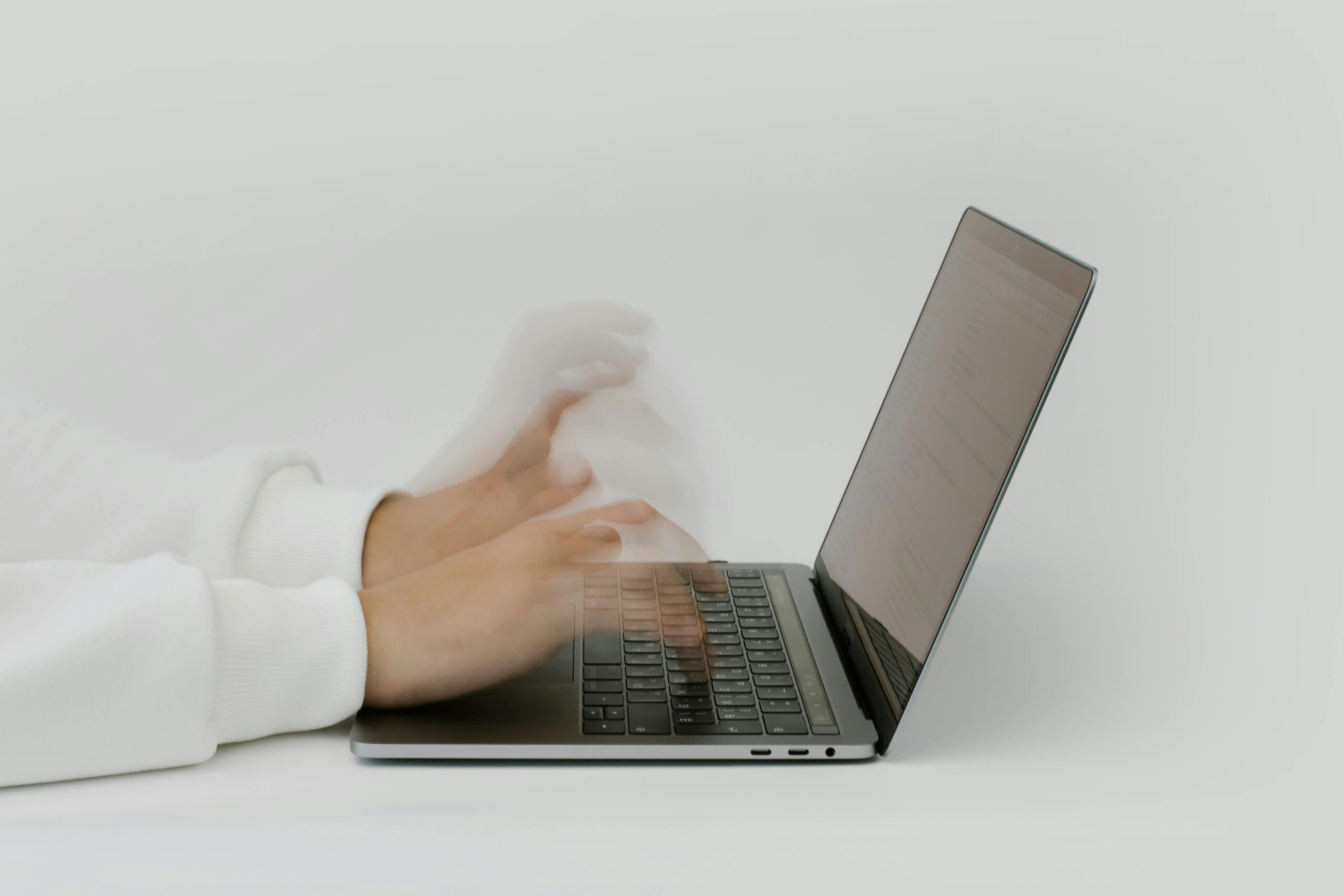Social media is an exciting and engaging aspect of your nonprofit’s online presence, but are you using it most effectively?
Your social media presence can be leveraged for more than just posting pictures and updates: it can more strongly define your nonprofit’s identity to others, promote your fundraising campaigns and donation pages, and be a tool for education and engagement.
So how can your social media pages do all that for you? We’ve defined our 7 most important strategies for marketing with social media:
- Utilize the right platforms
- Ensure ease of use
- Define your content strategy
- Define your communication strategy
- Focus on engagement
- Merge your social media and fundraising strategies
- Track and analyze key metrics
With our simple communication tips, you can optimize your time online and increase engagement with your supporters!

1. Utilize the right platforms.
The first step to ensuring that your social media is being used as effectively as possible is to make sure that you’re in the right place! Take some time before really committing to any platform to find out where your supporters and their friends are.
The most common social media platforms to consider are:
- Tumblr
Each of these websites has their own strengths and weaknesses, and have different uses. Instagram is a great place to post pictures of your nonprofit in action, but isn’t as effective for spreading information. The same goes for Pinterest.
While choosing your social media platforms, consider your long-term goal: which of these platforms will best support your online fundraising tools?
Consider sending out a survey to your email list and ask your supporters which websites they use the most. Or make an account on all of them and see who you can find!
You can also consider the general age range of your supporters when picking a social media platform. While more and more people of all ages are spending time online, certain websites draw certain demographics more than others.
Everyone uses Facebook, for example, but Tumblr tends to be used mostly by younger people (think 15-30 years old). Pinterest attracts people of all ages, but has a reputation for being used primarily by women.
A social media best practice would be to diversify the platforms you use. This strategy ensures that you can reach the widest possible audience.
Don’t spread yourself too thin, though — pick a few websites to join and then focus your attention on those, instead of trying to maintain a presence on all of them.

2. Ensure ease of use.
The social media platforms you pick will almost definitely have an app, which is great for your mobile supporters.
But once you start interacting with them via those apps, you need to make sure the rest of your online presence is up to par! To optimize your outreach to your followers on app-centric social media, your website needs to be mobile-optimized or mobile-responsive.
Mobile-optimized and mobile-responsive, while different strategies, have the same end goal: to make your website functional and readable no matter what size browser you’re using.
While most CMS programs will automatically use templates that make your website mobile-responsive, it’s still worth checking on just in case.
Your donation form also needs to be mobile-responsive, so that your social media followers can support your cause right from their phones. An easy way to make sure that this happens is to follow some simple tips:
- Only include the necessary fields for the donation
- Take the guesswork out of donating by suggesting amounts
- Keep your page branded to your nonprofit, so your donors feel secure
For more strategies to help you build a donation page, check out these tips from Salsa Labs.
Once you’re sure your website and donation pages are ready for mobile use, incorporate social sharing into your donation process!
This way, donors get to display their philanthropic interests to their friends, and their friends can see what nonprofits are worth trusting and supporting.
3. Define your content strategy.
Once you’ve picked out the platforms you’re going to focus on, it’s time to start planning what you’re going to post.
What do you want people to look forward to most about your organization’s posts? If you work for an animal shelter, don’t be afraid to capitalize on the cuteness of your constituents. Everyone loves pictures of puppies.
The most important thing to keep in mind is relevance. Your posts should always be related to your organization, your cause and mission, or your constituents. Use your social media to stay on top of breaking trends in your field.
Your social media is a way for you to engage with your community of supporters, your peers who work for the same cause in other capacities, and with the people who can effect change on topics regarding your cause.
Some strategies for keeping up with what content to create include:
- Stay engaged with debates and offer your thoughts. This will create name recognition and establish you as a thought leader.
- Interact with local, state, and federal politicians who are related to your cause. React thoughtfully to things that they say regarding your mission.
- Create educational content based on correcting misconceptions you see, which are perpetuated where people talk about your cause or mission.
Don’t be afraid to experiment with types of content. Use what you learn from your first few posts to guide your content creation in the future!
This all seems distant from the goal of using your social media to market your fundraising campaigns, right? Guess again!
By creating an online community and building name recognition in the everyday interactions your social media person or team has, you can establish credibility. This credibility will help you tremendously when you do make your asks.
When you bring up your fundraising efforts, be direct. Let your online supporters know exactly what you’re asking for and how they can contribute to your cause. Because most of your interactions are not asks, your supporters will be happy to help when you do make the ask.
4. Define your communication strategy.
Now that you know what you’re going to say with your new social media platforms, it’s time to decide how you’re going to say it.
How you convey your information is going to have a measurable impact on the online definition of your brand.
What tone are you going to use with your supporters? Will you be serious and formal, or jokey and familiar? Will you post memes about your topic, or strictly educational content?
Once you’ve decided how you want to portray your nonprofit online, consider asking one member of your team to handle all social media posts, so that the tone is consistent across the board.
Now think back to your high school English classes and remember the important parts of crafting a narrative. You’ll need:
- Recurring themes — things like the importance of friendship or teamwork
- Characters — your team, your supporters and volunteers, and the people you’re helping
- Goals — the specific achievements your organization is striving towards
- Conflicts — the obstacles keeping your organization from meeting its goals
Using storytelling techniques to shape the way you frame your posts is a vital part of a successful social media strategy. It allows your followers to understand your organization’s mission in a familiar way, as well as creates interest: how will the story end?
The next thing to consider in your social media strategy is how you can employ visual storytelling to emphasize what your posts are already saying.
Pictures are worth a thousand words, after all, so they can add more depth to your 140-character Tweet. Your pictures should be high-quality and focused on people, rather than places or things.
The quality makes your organization look more professional, and by focusing on the people making up your organization and the community around it, you can help foster an emotional connection between your followers and your nonprofit.
5. Focus on engagement.
A vital part of your nonprofit’s social media strategy is to prioritize engagement with followers and others in your sphere of interest, not simply making posts. Your posts only help your organization when people see them, after all.
So how can you make sure that you’re making a splash with your content? First, you need to keep three things in mind. These three aspects of posting will keep your organization front and center during conversations, and they are:
- Branding.
- Timing.
- Tagging.
Branding refers to ensuring that your nonprofit’s posts reflect your nonprofit. When people see your posts, they should think, “Yep, that’s Animal Shelters of America for you!”
If your followers can’t identify that your post came from you in the 3 seconds it takes for them to scroll past it, they won’t go back up and check. Try including your logo on all photos you post, or using the same hashtag on every post.
Timing refers to when you post your content. Strategically plan when your content goes live: if your Instagram or Facebook story is posted at midnight, no one is going to see it until the next morning, at which point it will have been buried under all the stories posted that morning.
Tagging refers to using hashtags on your posts. This is a great way to increase visibility, because it pushes your content into search results that will drive interested readers to your profile. Try using popular hashtags relevant to your content, and see who turns up!
Once your posts are becoming popular, prioritize building relationships with your most engaged followers. Things to consider are:
- Who likes all of your posts?
- Who uses your hashtags?
- Who comments on or reposts your images?
Bonus points come from any of these dedicated followers also being supporters, donors, or volunteers for your organization in real life.
To increase engagement with these people and leverage their social networks to increase your nonprofit’s visibility, reach out to them individually.
If one of those followers has a particularly large following, ask them to ‘signal boost’ your stuff, which is when they repost or otherwise redistribute your information (educational content, appeals for donations, etc) to their own followers and add their reasons for supporting you.
You could also send your most dedicated followers branded merchandise. Think T-shirts — check out Bonfire’s tips for printing them if you haven’t already.
Ask them to post pictures of themselves wearing it, with captions detailing the mission of your organization and why their followers should support you.

6. Merge your social media and fundraising strategies.
Now that you’ve done all the work to make your social media popular, engaging, and educational, it’s time to make it work to maximize the impact of your fundraising strategies.
What’s your nonprofit’s current fundraising strategy? Can it be integrated into your online presence to spread the news as far as possible? Some of our favorite fundraising strategies are perfect to integrate into your social media:
- Peer-to-peer fundraising. The social nature of this fundraising strategy is perfect to pair with your social media!
- Text-to-give opportunities. Use this strategy to make giving as easy as possible- donors can do everything right from their phones.
- Giving days like #GivingTuesday. This tactic comes with its own built-in hashtag, making it perfect to market on platforms like Twitter and Instagram.
Social media is also a great way to disseminate important information regarding even your in-person fundraising tactics.
Use your social media to spread awareness about matching gifts programs, and provide links to resources for donors so that they can take advantage of their employers’ corporate philanthropy policies.
Incorporate your social media into your events by creating hashtags for specific events like fun-runs or walkathons, or use your profiles to easily present current pictures and updates during informational dinners. Then encourage attendees to follow your accounts!
You could also emphasize your social media during key giving times, like holiday seasons, the end of the year, or popular giving days like #GivingTuesday. Use your online voice to raise awareness and emphasize different ways to give, like through donations or volunteering.
7. Track and analyze key metrics.
It’s important to remember that your social media should never stagnate. To ensure that your social media doesn’t get boring, track some important metrics.
Some important data points to keep in mind are:
- Follower count on each platform.
- Engagement trends on posts: likes, comments, shares.
- Traffic on your site from your social media.
- Donation trends following social media campaigns.
Which of your posts are highest-performing? Are your supporters using your hashtags to post about your campaigns? Which hashtags are most popular?
Tracking social media metrics is a good way to ensure that you weed out practices that don’t generate engagement, or worse: cause people to unfollow you!
By prioritizing strategies that have proven to drive traffic to your donation page or increase followers, you can make sure that your social media continues to add value to your nonprofit’s marketing strategy.
Keep in mind the data that you collect from other software as well, like your donor database and website analytics tools.
By analyzing data from different sources and sorting it by windows of time, you can draw conclusions about the efficacy of more than just your social media efforts. You can also see how different fundraisers generate different levels of interest and engagement.
Staying on top of your social media metrics will help your fundraising strategies overall, and maximize your nonprofit’s ability to reach and engage new audiences.
Social media can seem daunting, but with some simple strategies, you can turn it into a tool for marketing and engagement.
Your nonprofit has a story that deserves to be told, and social media can help you tell it.
Gerard Tonti is the Senior Creative Developer at Salsa Labs, the premier fundraising software company for growth-focused nonprofits. Gerard’s marketing focus on content creation, conversion optimization and modern marketing technology helps him coach nonprofit development teams on digital fundraising best practices.









